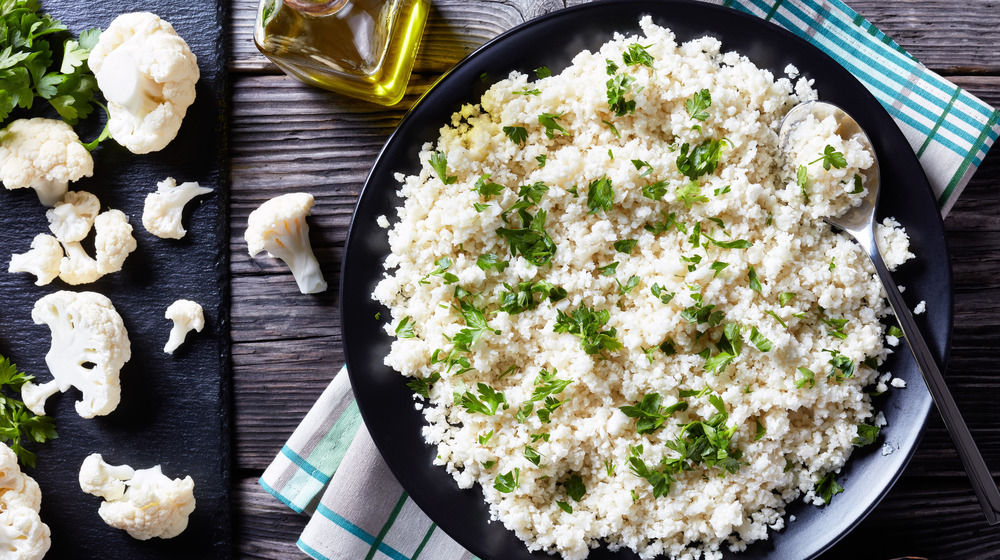Should You Get Cauliflower Rice Next Time At Chipotle?
To make its menu friendlier for vegans, vegetarians, and people on low-carb diets, Chipotle Mexican Grill this week unveiled Cilantro-Lime Cauliflower Rice for a limited time at its U.S. and Canadian locations (via Chipotle). A twist on the popular chain's white rice recipe, Chipotle's cauliflower rice will set you back an additional $2 per order — but contains only 4 g of net carbs per serving.
But are there other worthwhile reasons to check out cauliflower rice? Several, according to a nutritional comparison from the U.S. Department of Agriculture. That's because cauliflower "rice" isn't really rice or any type of grain: It's riced or finely grated cauliflower, so it's all vegetable. The grated texture makes it resemble traditional cooked white rice (via Healthline).
If you're trying to cut calories, cauliflower rice will save you a lot in that department. Either raw or cooked, one cup (107 g) has just 27 calories. That's 10 to 20 percent of the calories in the same quantity of cooked rice. But cauliflower rice really packs a punch in other nutrients. About one cup (or 100 g) of raw cauliflower contains 2.3 g fiber and more than half the daily value (DV) of vitamin C (44 mg) (via USDA). The same portion of cooked white rice contains about 36 g of carbs, less than 2 g of fiber, and no vitamin C (via USDA). Brown rice is similar — it contains about 25 g of carbs, also less than 2 g of fiber, and no vitamin C (via USDA).
Cauliflower rice packs a lot of antioxidants and vitamin C per serving
A 100 g portion of cauliflower also contains antioxidants such as folate (44 µg) and vitamin B6, plus a significant amount of choline — 39 mg, or 9 percent of the DV. According to the National Institutes of Health, choline benefits the body's cardiovascular and neurological systems. Compare that with the same size portion of white rice, which contains little folate (1.74 µg), half the amount of vitamin B6, and 3.6 mg of choline. The same size portion of brown rice contains similar amounts of vitamin B6 as cauliflower but just 9 µg of folate and 9.2 mg of choline.
In short, using cauliflower rice instead of white or brown rice in your burritos, Asian, or Indian dishes could boost your antioxidants, along with your fiber and vitamin C intake. Cauliflower rice is fairly simple to make, too, if you're not near a Chipotle: just wash and dry a fresh head of cauliflower, remove the greens, and grate the head using a box grater or a food processor. Pat away any excess moisture — cauliflower is high in water — and season as desired. Fresh cauliflower can develop an "unpleasant sulfur smell" if you store it in the refrigerator for a few days, though, so either eat it immediately or cook it or freeze it, Healthline says.

